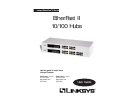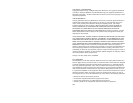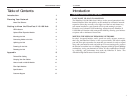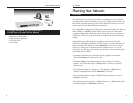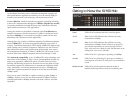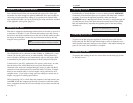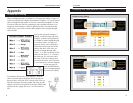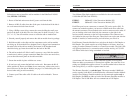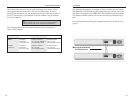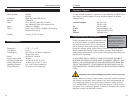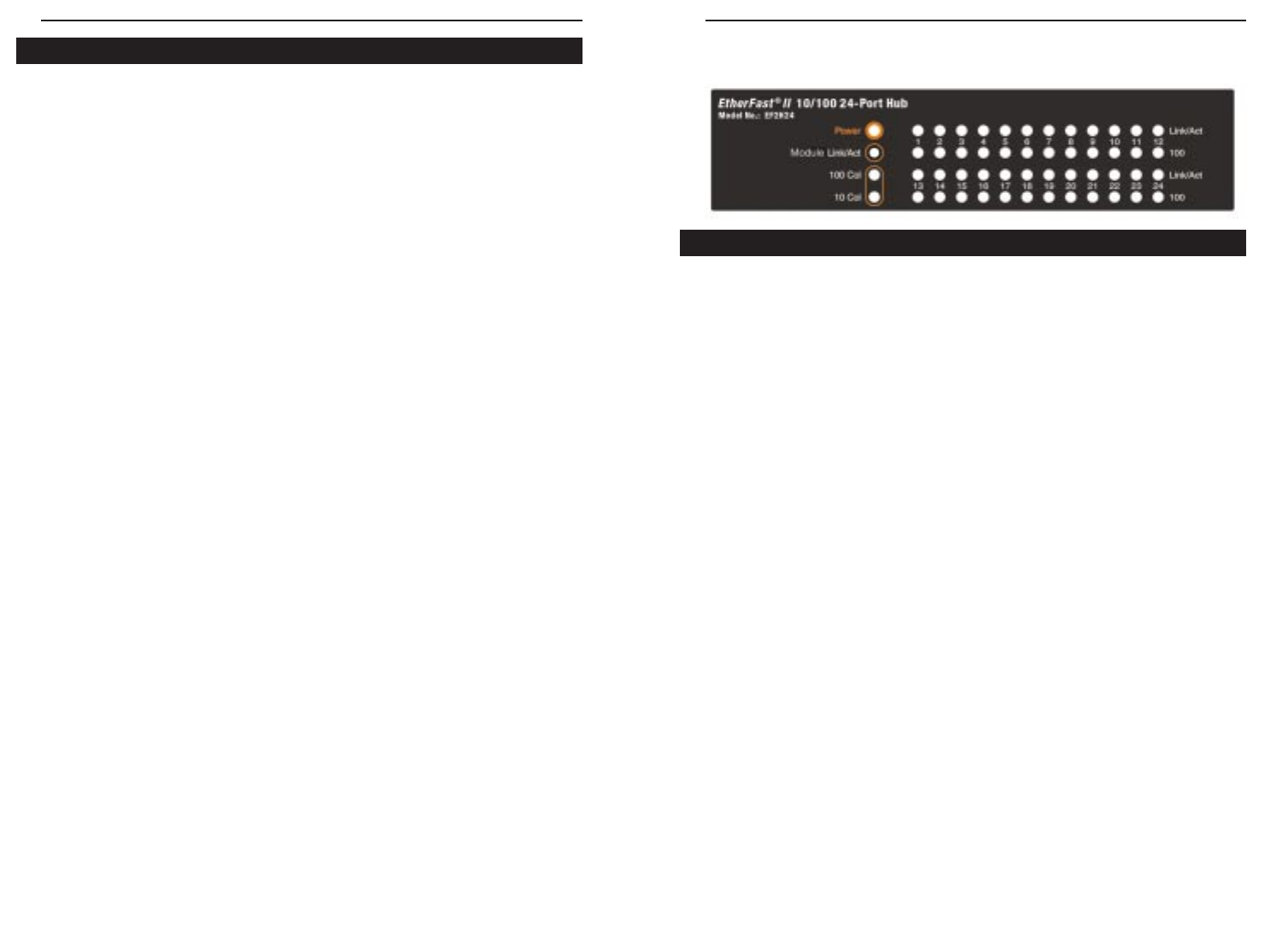
10/100 Hubs
Getting to Know the 10/100 Hub
Power LED will be lit whenever the hub is receiving power.
10 Col When lit, this LED indicates that collisions are being
encountered at 10Mbps.
100 Col When lit, this LED indicates that collisions are being
encountered at 100Mbps. Some collisions are normal. If
your network experiences an excessively high collision
level, verify that your cabling is good, and that there are no
cabling coils, cross-overs, or breaks
100 LED will be lit if a given port is operating at 100Mbps.
Link/Act LED will be lit or flickering if a given port is sending or
receiving data; will not be lit if the port is not connected to
a node.
Module Link/Act LED will be lit if the optional expansion module is
installed; flickering when receiving or transmitting data.
5
Instant EtherFast II Series
As the demand for desktop video, multimedia development, imaging, and
other speed-intensive applications continues to rise, the need for high per-
formance, fault tolerant LAN technology will become more critical.
Standard Ethernet, which has been the most popular networking technology
to date with a maximum data throughput of 10Mbps (Megabits per second),
is becoming insufficient to handle the latest video, multimedia, and other
speed-intensive client/server LAN applications.
Among the solutions to the problem of network speed, Fast Ethernet has
emerged as the most viable and economical. Capable of sending and receiv-
ing data at 100Mbps, it is more than fast enough to handle even the most
demanding video and other real-time applications.
Although there are a number of different competing Fast Ethernet implemen-
tations, 100BaseTX is by far the most popular. Operating on two pairs of
Category 5 unshielded twisted-pair (UTP) cabling, 100BaseTX supports high
speed signaling and is relatively inexpensive. Because it uses four wires for
data transmission and the same packet format, packet length, error control,
and management information as 10BaseT, 100BaseTX can be made to com-
municate with slower 10BaseT equipment when routed through a switch.
This backwards compatibility is one of 100BaseTX's major advantages over
other forms of Fast Ethernet; it allows critical, speed-dependent network seg-
ments to be upgraded to 100BaseTX speeds as needed without re-wiring,
refitting, and retraining an entire site. Networks can now mix both slow and
fast network segments for different users or departments. Publishing, R&D,
video, multimedia, or accounting departments can enjoy a 100Mbps pace,
while other corporate segments can operate at slower and more affordable
10Mbps speeds.
Every port on your 10/100 Hub is capable of running at either 10Mbps or
100Mbps, allowing you to mix and match economical 10BaseT hardware
with high performance 100Mbps network cards, hubs, switches, and other
equipment.
4
About Fast Ethernet
LEDs



